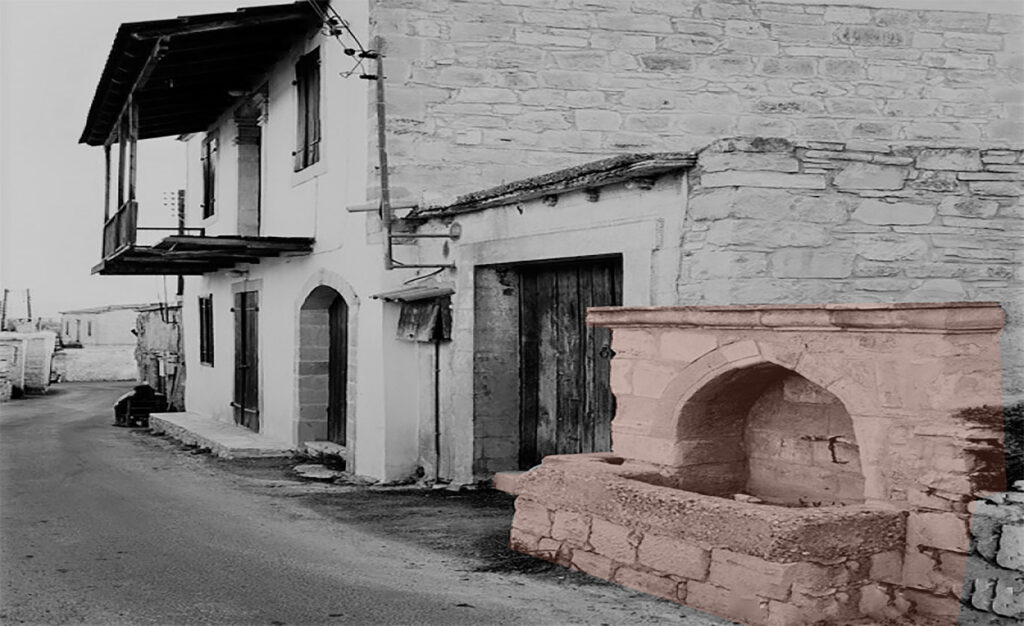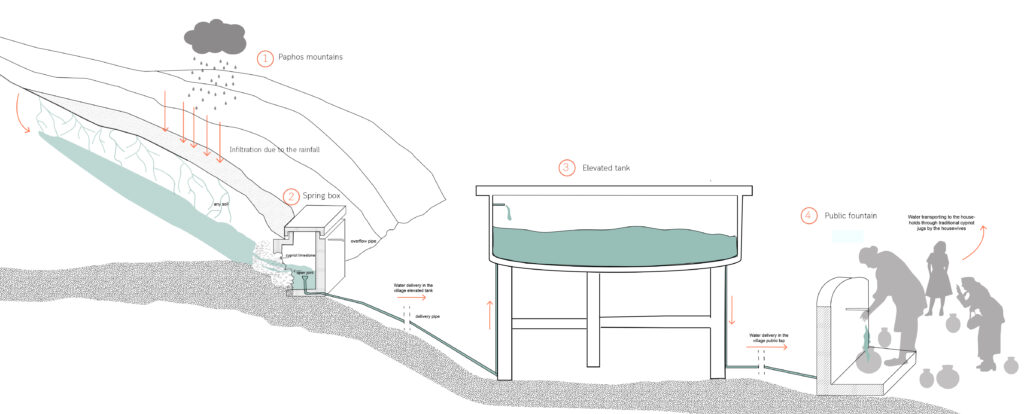
Transporting water from a non-local spring to the village households through street taps.
Xenia Georgiadou
2023
After the 40s, people in the villages used to be supplied with drinking water through public fountains, which were located in the main square of the village. The source of this system were either spring, chain-of-well or a borehole as well as the source water could be used for domestic or irrigation purposes. One example of spring that still provides with drikning water the households of a village is the Teratsia spring in Paphos forest.


Furthermore, Cypriot artists have been influenced and inspired by the process of supplying water in the household through the public taps and they wrote poems and songs talking about this. Additionally, a traditional dance had been generated about the water supply from the fountain to the household, where the women used to wear their traditional costumes. For instance, a traditional song, which is written in the Cypriot dialect is presented below:
Στείλε με μάνα μάνα στο νερό
Send me, mother, oh mother to (bring some) water
να σου το φέρω δροσερό
to bring you fresh water
τζι’ αν δε στο φέρω φέρω καθαρό
And if I will not bring, bring you clean water
την νιότη μου να μεν χαρώ.
may I not enjoy my youth.
[…]
Στη βρύση μάνα μάνα μου έφτασα
After I got, mother, oh mother to the fountain
τζαι το σταμνί μου γέμωσα
and after I filled up my jug
τζι άξαφνα παραπάτησα
Suddenly I misstepped
τζαι το σταμνί μου τσάκισα.
and I broke my jug.
Circular Stories

The diagram illustrates how the water system with the street fountains for drinking water supply used to work. Particularly, the Paphos forest is represented by mountains, where the infiltration happens due to the rainfall and small streams are created, which end up in the sea.
The streams are gathered to the foot of the mountain where a spring is generated called “Teratsia”. People have created the spring box, where the water passes through the limestone for purification purposes, which allows the water to be drinkable. Moving on, the water flows to the spring box, where is stored and then, through underground pipes ends up in the concrete-built elevated reservoirs. which is elevated for more pressure. Each village had its own elevated reservoirs. Then, the water flows through underground pipes to the street fountains, where the women used to collect it. The communal fountains were located in central points in the village, in order to be accessible by the locals. Housewives used to bring the water to their house, in clay traditional jugs and they usually store it in big clay jars.

In addition, during this period, agriculture had been developed. Livadis, a permanent river was not seasonal then, and it ensured the water supply for local agriculture aspect. Specifically, the agriculture were located on the two sides of the river. Therefore, a surface irrigation system, especially open channels were used to transfer the water from the river to the trees.
